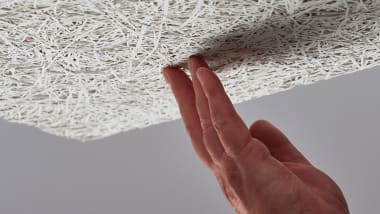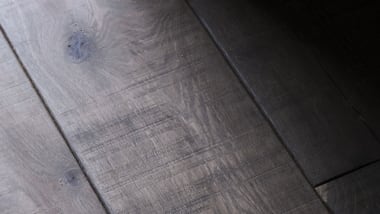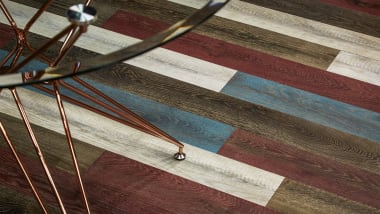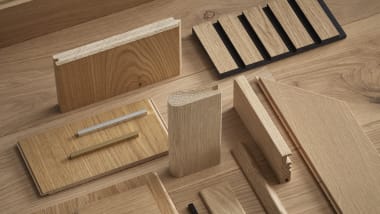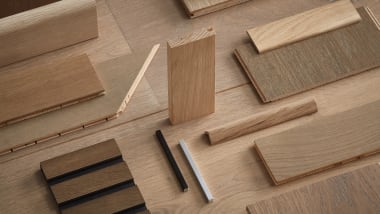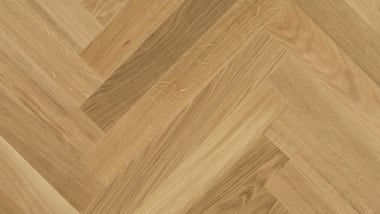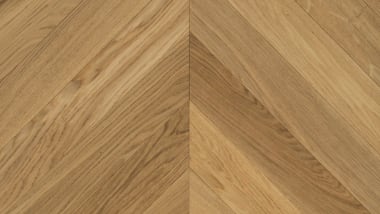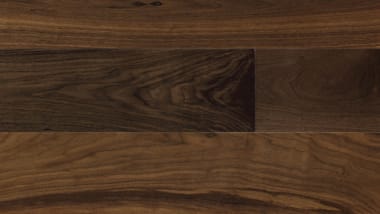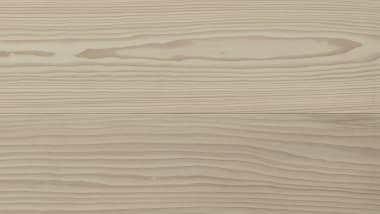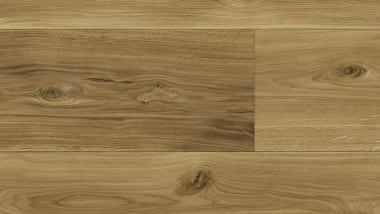Engineered Floors vs. Solid Wood: What's the difference?
15 Jan 2024
Engineered wood floors and solid wood floors have some key differences, mainly in their composition, construction, and suitability for various environments. Here's an overview of important distinctions to consider when shopping for your perfect floor:
Engineered Wood Floors
Construction:
Engineered wood consists of layers. The top layer, known as the wear layer, is made of real wood (veneer), while the lower layers are composed of plywood or high-density fiberboard (HDF). This allows for more efficient use of natural resources compared to solid wood.
Stability:
Engineered wood is more dimensionally stable than solid wood. Its layered construction makes it less susceptible to changes in temperature and humidity, reducing the likelihood of warping or cupping.
Installation:
Engineered floorsare often preferred for below-grade installations or areas with varying humidity levels. They can be installed using various methods, including floating, gluing, or stapling.
Refinishing:
Many engineered wood floorshave substantial wear layers (up to 6mm) that can be sanded and refinished multiple times, allowing for a longer lifespan and the ability to refresh the appearance over the years.
Suitability:
Ideal for basements, kitchens, or areas with fluctuating humidity levels where solid wood might not be the best choice.
Cost:
Engineered wood can be more cost-effective than solid wood, making it a practical option for budget-conscious consumers.
Versatility in Design:
The manufacturing process allows for a wide variety of wood species, finishes, and patterns, providing clients with diverse design options.
In summary, the choice between engineered and solid wood floors depends on factors such as the installation environment, budget, and personal preferences of a traditional solid wood flooring versus the enhanced stability of engineered wood. Explore Havwoods flooring range to find the perfect fit for your space.
Solid Wood Floors
Construction:
Solid wood flooring is made entirely of a single piece of wood. It is typically cut from hardwood logs and comes in varying thicknesses.
Stability:
Solid wood is more prone to expanding and contracting with changes in temperature and humidity. It may not be suitable for areas with high moisture levels.
Installation:
Solid wood is often nailed or stapled to a wooden subfloor. It requires a stable environment and is not recommended for installations below grade.
Refinishing:
Solid wood floors can be sanded and refinished multiple times, allowing for a longer lifespan and the ability to refresh the appearance over the years.
Authenticity:
Solid wood provides an authentic, natural look and feel. It is often preferred for areas where the genuine character of wood is desired.


See it in real life
It's time to choose your free samples or find a Havwoods showroom near you, where our experienced team will help answer any additional questions as well as pull wood floor panels that fit your needs.



